Rapid prototyping technology is changing quickly, and the prices of 3D printers for home use have decreased significantly. With these, there are now a lot of large-scale 3D printers on the market.
Large 3D printers have more space so that you can print big designs all at once. You don’t have to split the models or do anything else to make them fit on the build plate.
A large format 3D printer also has a big print bed, making it easy to print many things simultaneously.
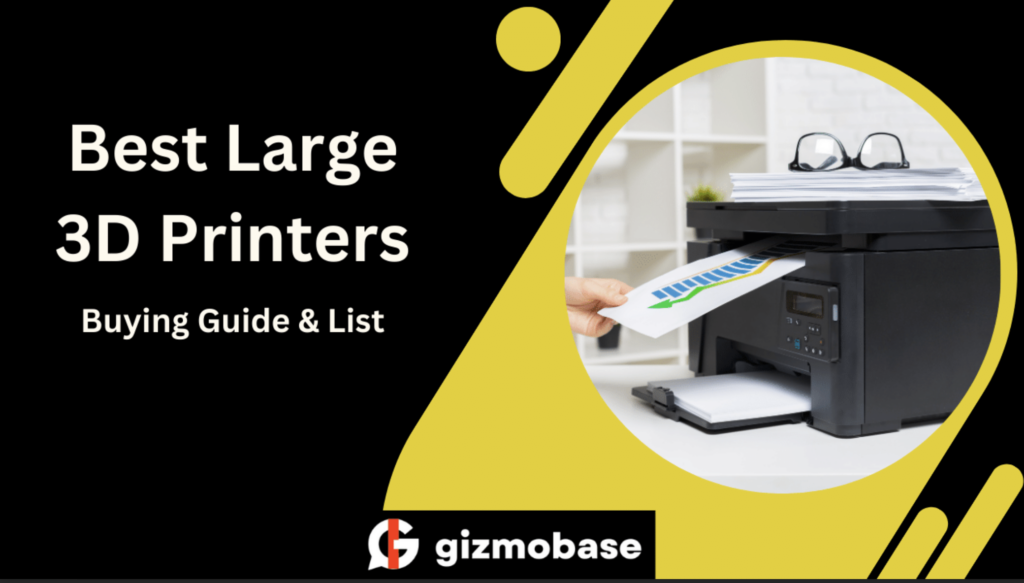
I have made a list of the best large-format 3D printers on the market because they are different.
The Creality CR-10 Smart Pro is a good choice for most people if they want a quick solution.
But if you want to know about all the large format 3D printers on the market, keep reading!
I’ll go into detail about features, price, and other things so you know everything you need to know.
What Constitutes a Large 3D Printer?
Depending on the object’s size, there are three primary categories of 3D printers: small, medium, and giant.
These classifications are used to organize the various print runs. They are not a part of any hard code. Most compact 3D printers have a build volume of 8 liters or less.
In practice, the biggest print you can make is 200 mm by 200 mm.
The Flashforge Finder 3, the Monoprice Mini Delta V2, and the Snapmaker 2.0 A150 are good examples. Medium-sized 3D printers have build areas that are between 8 and 27 liters.
The largest thing you can build here is 300 x 300 x 300 mm. The Ender 3 S1, Prusa i3 MK3S+, and Phrozen Sonic Mighty 4K are popular choices in this group.
Most 3D printers that cost less than $300 and less than $500 are medium size.
They are used a lot for general-purpose 3D printing, so, unsurprisingly, 3D printer makers focus on this category when making their machines.
A big 3D printer is defined as a print area larger than 300x300x300 mm or a build volume of more than 27 liters. The most well-known big-size 3D printers are those of the Creality CR series.
Large 3D printers cost more than small ones, but that’s not a surprise. That doesn’t mean every expensive 3D printer has an extensive print area.
For example, most 3D printers that cost less than $1000 also belong to the medium group.
| Image | Product | Detail | Price |
|---|---|---|---|
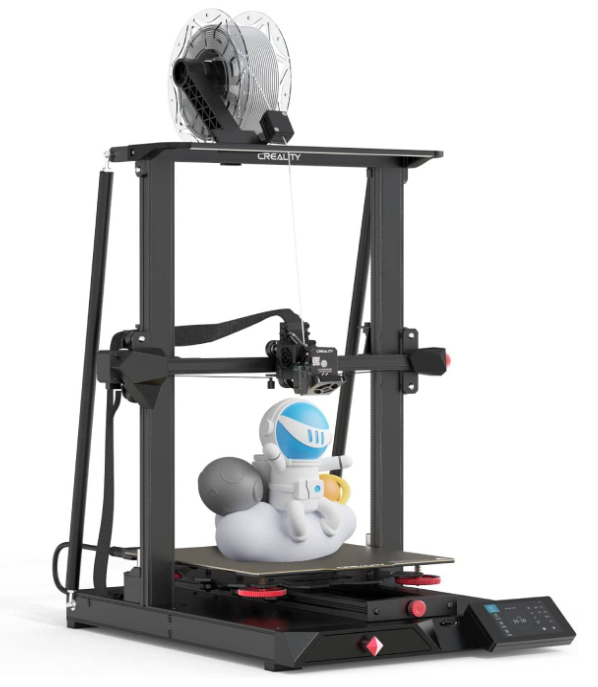 | Creality CR-10 Smart Pro |
| Check Price |
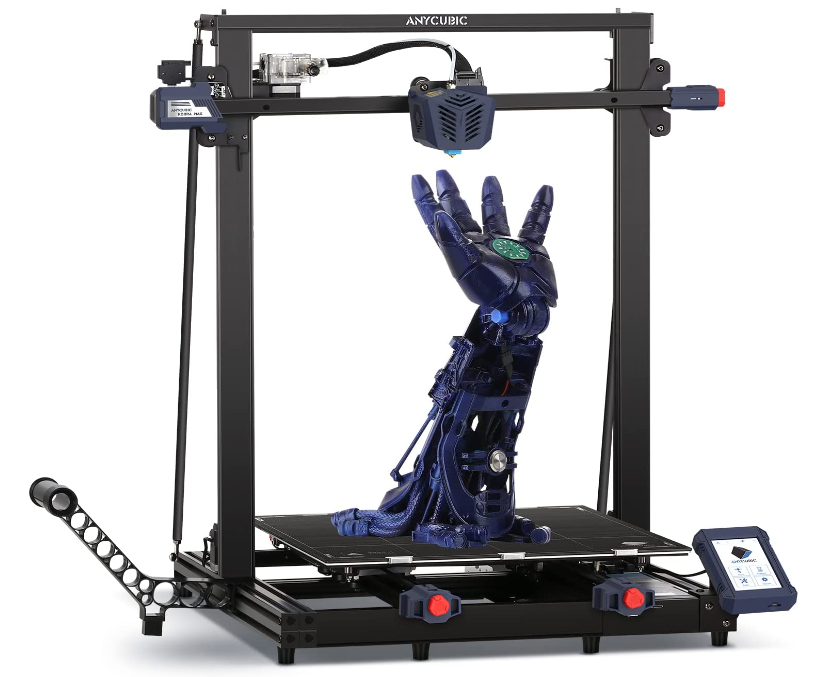 | Anycubic Kobra Max |
| Check Price |
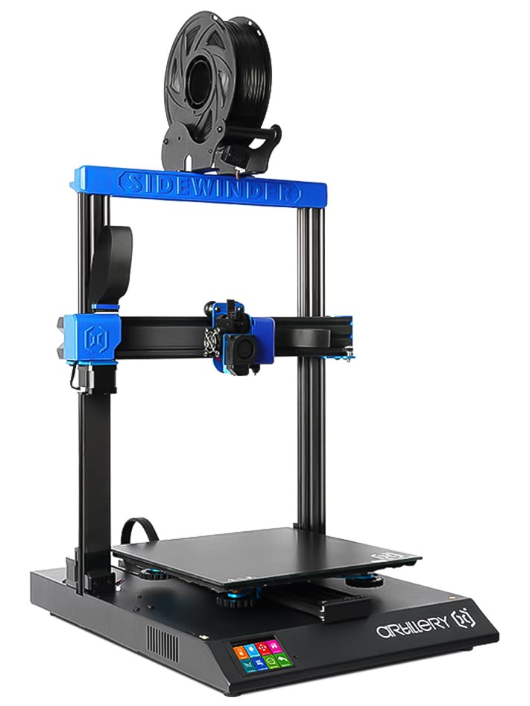 | Artillery Sidewinder X2 |
| Check Price |
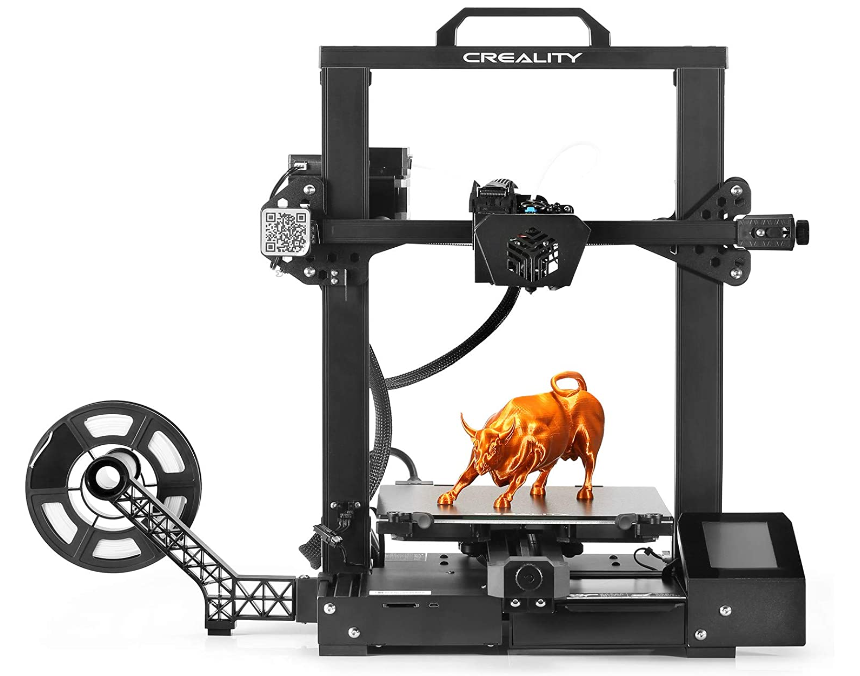 | Creality CR-6 Max |
| Check Price |
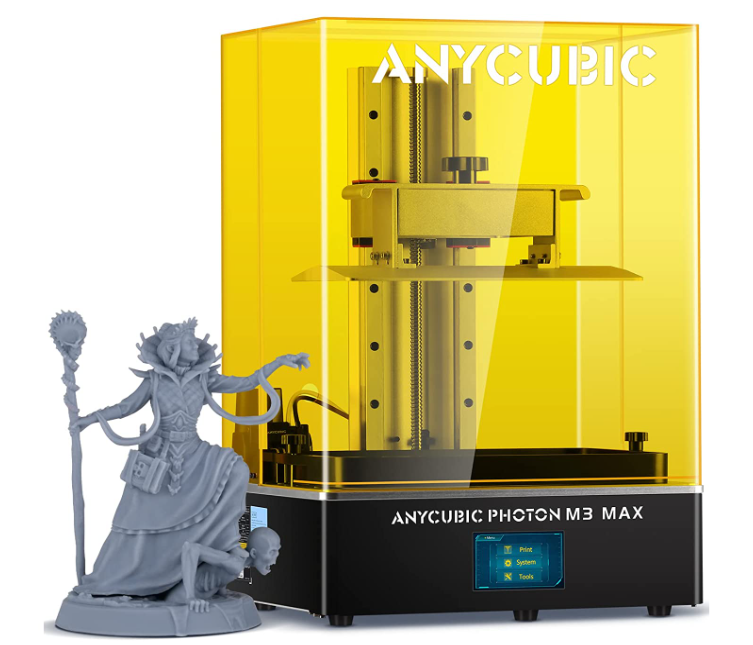 | AnyCubic Photon M3 Max |
| Check Price |
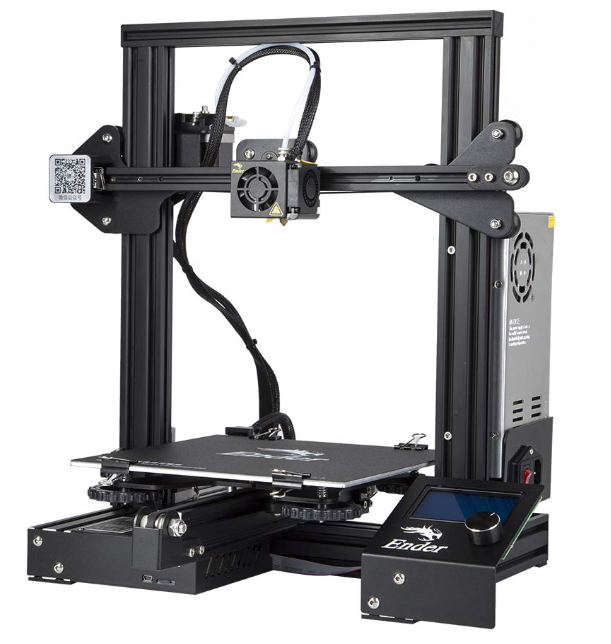 | Official Creality Ender 3 |
| Check Price |
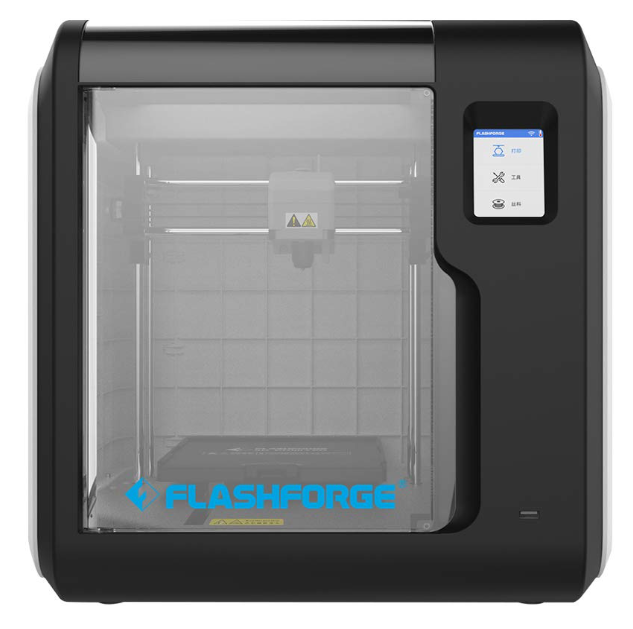 | FlashForge Adventurer 3 |
| Check Price |
7 Best Large 3D Printers 2025
Here are my recommendations if you’re looking for the best large 3D printers.
1. Creality CR-10 Smart Pro
Creality CR-10 Smart Pro

Features
- Remote-controlled 3D Printer with HD Camera
- Auto Leveling
- Dual Gear Direct Extruder
- Flexible PEI Bed for DIY Home and school
The CR-10 series from Creality has always been popular with 3D printer fans because it has a large build area and a low price.
The Creality CR-10 Smart Pro keeps up the tradition. It has some of the best features in its class, making it one of Creality’s best large-format 3D printers.
For instance, it has a large build volume of 300 x 300 x 400 mm, which is big enough to hold a full-face helmet in one piece.
Its features, such as Wi-Fi connectivity, remote monitoring, and control over your 3D prints, make it stand out.
You can also use Creality’s Cloud app to download, slice, and send your 3D models straight to the printer.

The CR-10 Smart Pro can print with high-temperature materials up to 300°C because its hot end is made of metal. The flexible printing bed with a PEI coating is also a first for the CR-10 series.
It has excellent bed adhesion, which makes it easy to take off finished prints. You also get the CR-Touch leveling sensor and manual leveling with help, so your first layers will be perfect.
One problem is its 350W power supply seems small for such a big printer. Because of this, the machine has longer print bed heating times.
But if you only 3D print big things, the extra minutes you must wait for the bed to heat up might not matter much.
Overall, the CR-10 Smart Pro is a complete package that meets almost all criteria for the best large-format 3D printer.
It is an excellent machine for large-format printing if you have the money and are willing to spend almost $800 on all of the Creality CR-10 Smart Pro’s features.
2. Anycubic Kobra Max
Anycubic Kobra Max

Features
- Self-developed Anycubic LeviQ Leveling Function
- Stronger Construction & Higher Precision
- Filament Runout Detection
- Filament Run-Out Detection
- Larger printing space
The Anycubic Kobra Max is an excellent choice for those on a tight budget who want their first large-scale 3D printer.
The Kobra Max costs $529 and has many features, making it a strong competitor to other large 3D printers.
It has one of the biggest build sizes on the list, at 400 x 400 x 450 mm. This gives you the freedom to print almost anything on the 3D printer.
Additionally, it has a dual-Z axis design to enhance stability and reduce print artifacts caused by a wobbling Z axis.
As Anycubic claims, the Kobra Max can print at a speed of 180 mm/s, twice as fast as most FDM 3D printers. This is almost as fast as the best Delta 3D printers can print.

This high speed makes it easy to print large 3D objects and can cut printing times by a lot. The Kobra Max also has a function that lets you pick up where you left off printing.
This is important for large prints, where a power outage can waste hours of time and paper. The printer comes with the LeviQ automatic bed leveling system from Anycubic.
This system uses an inductive probe to level the bed. In real life, this probe works like the Anycubic Kobra.
The Kobra Max has useful features like a big touch screen, a PEI print bed, and a filament runout sensor. But you can see that it doesn’t have an all-metal hot end, which will limit what materials it can print on.
Also, the inductive sensor can only be used on beds made of metal. So, if you want to upgrade to a glass bed in the future, for example, to 3D print flexible filaments like TPU, you will run into problems.
The Anycubic Kobra Max, on the other hand, has all the important features and makes reliable prints. It is a good choice for beginners and hobbyists who want a big 3D printer but don’t want to spend too much.
3. Artillery Sidewinder X2
Artillery Sidewinder X2

Features
- Intelligent power supply
- Synchronized Dual Z System
- Self-developed motherboard
- Upgrade Cable Manager
The Sidewinder X1 was a great competitor to the Creality CR-10 series, but it had a lot of new features at once, which caused some problems.
The Sidewinder X2 is a big step up from the earlier version of Artillery. The X2 is an easy-to-use 3D printer for beginners that can print a lot.
The X2’s automatic bed leveling is helped by a leveling probe that looks like BLTouch. There is also a print surface made of tempered glass and a heated build platform heated by AC electricity.
The glass surface helps you get a smooth first layer, and the AC bed heating warms the bed to 130°C in two or three minutes.

The Titan-style extruder with the Volcano hot end is the best way to move a lot of filament at once.
With a maximum nozzle temperature of 240°C, you can only 3D print with filaments that have a low temperature.
Another problem with the machine is that frame reinforcements do not support its XZ gantry.
This means that Z-banding or Z-wobble problems are more likely to happen when you 3D print at higher heights. This is a big problem compared to the CR-10 Smart Pro.
It has great safety features and can retract quickly right out of the box. This makes it a great large 3D printer for beginners.
The Artillery X2 is also a great partner for educational institutions and people whose work isn’t as professional. It costs less than $500, which makes it a good choice for many hobbyists on a budget.
You May Also Like:
4. Creality CR-6 Max
Creality CR-6 Max

Features
- Leveling-Free Starter FDM 3D Printer
- Auto Bed Leveling
- Enhanced Heatsink and Extruder
- TMC2209 Drivers
- 4.3 Inch Touchscreen
The Creality CR-6 Max is the bigger version of the popular Creality CR-6 SE. It has a large build area of 400 x 400 x 400 mm.
With the CR-6 Max, Creality hopes to offer a low-cost alternative to other large-scale 3D printers.
Its main frame is made of aluminum V-slot extrusions, and like the CR-10 Smart Pro, it has pull rods that reinforce the structure.
When 3D printing at high speeds, pull rods reduce z-wobbles and banding by making the frame triangular.

With the CR-6 Max’s nozzle-assisted automatic leveling, there is no need for an external sensor probe. Instead, the print bed is leveled by a nozzle and a strain gauge.
This makes both a light print head and a perfectly level bed.
The CR-6 Max still doesn’t have an all-metal hot end, and the open frame design makes it hard for the heated print bed to stay warm.
However, the printer is a good choice for hobbyists and print farms that will mostly use basic 3D printing materials and can make full use of its large print volume.
5. ANYCUBIC Photon M3 Max Resin 3D Printer
AnyCubic Photon M3 Max

Features
- Amazing Print Volume
- 7K High Resolution
- 13.6″ Screen & Protective Film
- Fast Printing & Powerful Light Source
- Automatic Resin Feeding
The Anycubic Photon M3 Max is the biggest of the three M3 (third-generation) Anycubic Photon resin printers. It is also the first large resin 3D printer that Anycubic has made.
The resin 3D printing subculture is gaining popularity since people want to produce more than one part at a time and in greater quantities.
There are only a few large resin 3D printers on the market right now, and the M3 Max is the newest one to join the small group.
A large build volume, a 7K LCD, as well as some cool features like automatic resin refills and matt-textured resin vats make the Max well-suited to printing large parts.
Also, the M3 Max does all this at a price that most people can afford. It is the cheapest way to start 3D printing with large amounts of resin.

ANYCUBIC Photon M3 Max resin printer can print up to 13 by “x 11.7” x 6.5″/30 x 29.8 x 16.4 cm, and the large print volume lets you make large models and print more at once, which makes printing more efficient.
This resin 3D printer’s 7K UV LCD screen offers a high resolution (6,480 x 3,600 pixels).
The contrast on the screen can be as high as 450:1. Print models with sharper details around the edges and corners will improve the quality and success of the print job.
The new smart resin-filling features for ANYCUBIC Photon M3 Max are now available! It helps resin intelligently fill and intelligently stop after enough time has passed.
The 3D resin printer laser engraving platform sticks well, which makes it much more likely that the printing will work.
6. Official Creality Ender 3 3D Printer
Official Creality Ender 3

Features
- Resume Printing Function
- Advanced Extruder Technology
- Safety Protected Power Supply
- Easy and quick Assembly
The Creality Ender 3 Pro is one of the most popular 3D printers that use filament. It is popular with beginners and people who want to make things on a budget.
The device ships without being put together, and its open-source design makes it easy to change. But this printer is easy to use because it has great customer service and good print quality.
The Creality Ender 3 Pro is one of the best 3D printers you can buy, whether you want to buy your first one or set up a fleet for manufacturing.
You get everything you need to assemble and run the Creality Ender 3 Pro without it being assembled.

Along with the printer parts, there are Allen keys, a microSD card, zip ties, flush cut wire snips for cutting filament, a scraper, a small coil of PLA filament, a microSD-to-USB reader, as well as a few parts for assembly included in the box.
All bolts come in sets that are bagged and marked with their sizes, which is very helpful when putting the thing together.
7. FlashForge Adventurer 3 3D Printer
FlashForge Adventurer 3

Features
- Removable & Flexible Heated Build Plate
- No Leveling of Build Plate Required
- Auto Filament Loading System
- Quick Heat-Up Nozzle
- 45 Decibel Noise Level
This is an excellent choice if you want something that is enclosed, easy to use, and won’t break the bank.
This fully enclosed printer is superb for classrooms and places where you must keep curious hands away from the printer’s hot end and other moving parts.
It has good print quality and features, but customer service isn’t always the best. Even better, it’s also a relatively inexpensive choice.
FlashForge makes the FDM/FFF 3D printer called the Adventurer 3. This small desktop system is the first in the company’s Adventurer series.
Along with the Creator 3, Guider IIS, Inventor IIS, and Explorer Max 3D printers, it was released at CES 2018.

After over a year on the market, the Adventurer 3, which has a build size of 150 x 150 x 150 mm, has become known as a cheap, light, and easy-to-use system that creators and teachers can use.
Even though it costs $449, this 3D printer has a built-in 2 2-megapixel camera, an extruder structure that can be taken off, and the ability to print 3D objects from the cloud.
Since the FlashForge Adventurer 3 is a printer that uses a filament, we tested it with both PLA and ABS.
I have used many different test models, each of which was made to test another type of geometry that can be hard for filament printers to handle.
The FlashForge Adventurer 3 made good prints, so it got a score that was above average.
Buyer’s Guide: What to Look for When Choosing a Large 3D Printer?
1. Build Volume
With a large print volume, you will have more options for how big the 3D models you want to print can be.
A larger build area is helpful if you want to print large pieces or many small things at once for batch production.
The size of the printer and how much it costs, in the end, depends on how much it prints. A bigger machine will take up a lot of floor space, and because it has more extensive parts, it will cost more.
Even with large format 3D printers, a build area between 300 x 300 mm and 400 x 400 mm should be enough for most larger prints.
If you don’t care about price and need a big 3D printer, the Raise 3D Pro 3 Plus and the Vivedino Troodon are two of the biggest ones on the list.
Aside from that, the Creality CR-10 Smart Pro and the Anycubic Kobra Max have a lot of features for a low price and can print a decent amount.
2. Heated Enclosure
The printing environment is kept separate from its surroundings by an enclosure.
This makes for better printing performance and quality. With a 3D printer enclosure, it’s easier to print with filaments that get hot.
Temperature changes make these filaments, like ABS and Nylon, more likely to warp and curl.
If your 3D printer is enclosed, drafts and other outside factors can’t change the temperature of the build area.
Even a slight temperature change can cause large prints to warp or curl, so it’s best to protect them with an enclosure.
Also, an enclosure helps keep out the 3D printing fumes the printer gives off while it works.
When you add a heated enclosure to all of this, you get a safe printer for kids, and it gives you the best results with most types of materials.
In enclosed 3D printers, the heated build plate helps to passively heat the printer, making it a stable place to print.
Some of the best examples of large-format, fully enclosed 3D printers are the BCN3D Epsilon W50, the Raise 3D Pro 3 Plus, and the Vivedino Troodon.
3. Filament Compatibility
When you can use a wider range of filaments, you can use your printer for a wider range of tasks.
A 3D printer must have at least an all-metal hot end that can reach 300°C and a heated bed that can reach 100°C to work with various materials.
As we’ve already talked about, a printer’s ability to print well with high-temperature plastics is also helped by an enclosed build area.
You can 3D print filaments made from metal and fiber with the Ultimaker S5 and the BCN3D Epsilon W50.
The Raise 3D Pro 3 Plus and the CR-10 Smart Pro have a high-temperature hot end and a heated bed so you can use a wide range of filaments with them.
The second one doesn’t have a case, so it can’t print either.
4. Rigidity
Large 3D printers that are made in the style of the i3 need to move a large print bed at a fast rate.
This movement could cause your 3D-printed models to ghost, ring, Z-banding, and wobbling.
In the same way, CoreXY 3D printers need a stable structure to print at high speeds without lowering the quality of the parts.
To do this, a 3D printer’s frame must be rigid enough to keep the printer from shaking too much. To lessen the effects of inertia on fast-moving parts, the structure also needs to be stable at high speeds.
You can see that the Creality CR-10 Smart Pro, the Anycubic Kobra Max, and the CR-6 Max all have pull rods that make the printing more stable.
3D printers with these frames can print tall objects at high speeds and have a stable triangular frame.
5. Print Speed
How long it takes to print depends directly on how fast you print. Large 3D prints take much time to make with a 3D printer.
Even a small boost of 10–20 mm/s can make a big difference when printing big models.
Most of the time, i3 3D printers are not known for how fast they print. And especially with big 3D printers, there is a lot of weight on the print bed from the model.
Because of this high load, it is hard for these printers to print at high speeds without lowering the quality of the prints.
On the other hand, a CoreXY 3D printer is better for printing quickly. The bed stays mostly still, and the printhead is the only part of the 3D printer that moves quickly.
Ultimaker S5, Vivedino Troodon, and Raise 3D Pro 3 Plus are a few of the best 3D printers since they print faster without sacrificing quality.
Quick Links:
- Top 5 Best Thermal Label Printers
- 5 Best Sublimation Printers
- Top 5+ Best 3D Printers For Miniature
- Top 5 Best Sublimation Printers
Conclusion: Best Large 3D Printers 2025
Large 3D printers let you print big models all at once or print many models at once, called “batch 3D printing.”
The printer size doesn’t stop you from doing much, and you can print most 3D prints without breaking them up into pieces that need to be put together.
The Creality CR-10 Smart Pro is our current pick for the best large 3D printer overall. A large build volume, a remote 3D printer, and many advanced features make it an excellent option for most people.
If you don’t want the CR-10 Smart Pro, the Anycubic Kobra Max and the Vivedino Troodon are great alternatives.
The Kobra Max is better for beginners and people on a budget, while the Troodon is better for high-speed professional 3D printing.
Which large format 3D printer would you pick? Tell us in the comments below.
